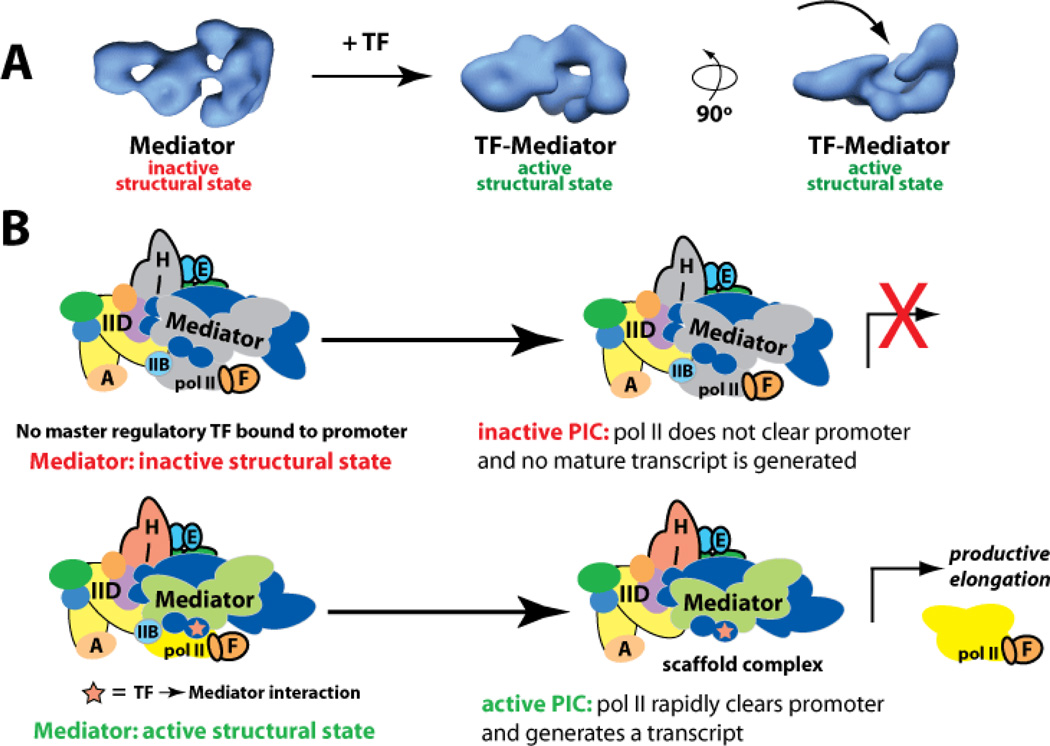Figure 2.
Model for how TFs activate transcription via Mediator. (a) TFs induce sweeping structural shifts upon binding Mediator. At left is the structure of Mediator without a TF bound, whereas at right are two views of a TF-bound state (in this case, p53-Mediator). A common feature of TF-bound Mediator structures is a large pocket domain (arrow) that corresponds to the pol II binding site. (b) Schematic of an inactive or active PIC. In the absence of a key regulatory TF, the PIC can assemble at the promoter but remains in an inactive or unproductive structural state. Upon TF-Mediator binding, Mediator adopts an active structural state, which activates the PIC and pol II transcribes the gene. Adapted from ref. [35].

